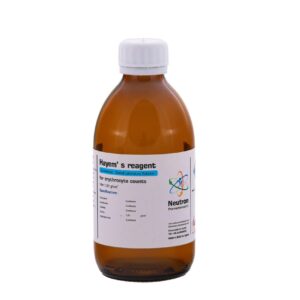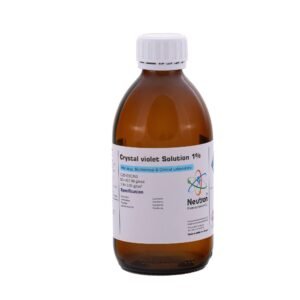Erytrosin solution
| Formula | C20H6I4Na2O5 |
| Molecular Weight: | 879.86 g/mol |
| CAS number | 16423-68-0 |
| HS Code | 3212 90 90 |
| EC-No. | 240-474-8 |
| Storage | Store at 2 to 30° c |
| SDS | available |
| Appearance | Red brown powder | ||
| Identification (UV -VIS Spectrum) | Conforms | ||
| Absorption ʎ max | 524 to 527 | nm | |
| Spec.Absorptivity | 930 to 1170 | ||
| TLC -Test | Conforms | ||
| Loss on drying | ≤ | 10 | % |
| Suitability for microscopy | Conforms | ||
| Nuclei | dark blue to dark violet | ||
| Cytoplasm | pink to red | ||
| Intercellular substances | pink to red | ||
| Erythrocytes | yellow to orange | ||
| Dye content | ≥ | 80 | % |
Erythrosin Solution is a water-soluble red dye commonly used as a biological stain and food coloring agent.
🏭⚗️ Production
Erythrosin solution is prepared by dissolving erythrosin B, a tetraiodofluorescein dye, in purified water to a specified concentration. The resulting solution is filtered and stored in airtight containers to maintain stability.
🔬 Properties
The solution appears as a bright pink to reddish liquid with strong fluorescence under UV light. It is soluble in water and stable under typical laboratory conditions. Erythrosin has a molecular formula of C₂₀H₆I₄O₅ and is known for its vivid color and photostability.
🧪 Applications
Erythrosin solution is widely used in histology for staining tissues, especially in identifying connective tissues and collagen fibers. It is also used in food products as a color additive and in some dental and pharmaceutical preparations.
⚠️ Safety
Erythrosin is generally considered safe in controlled amounts but may cause irritation upon direct contact with skin or eyes. Handling with gloves and protective eyewear is recommended, and the solution should be stored away from strong light and heat sources.





